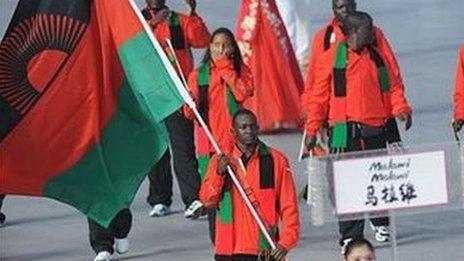How should New Zealand choose a new flag?
- Published
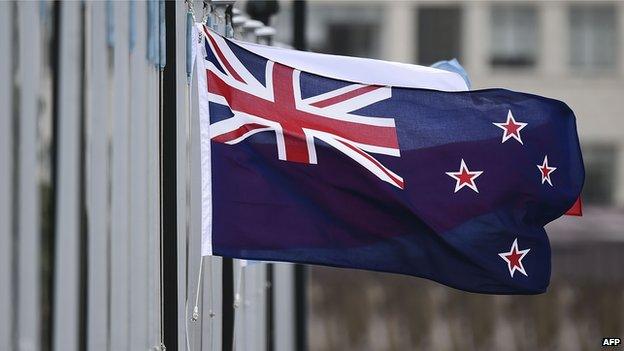
New Zealand will decide by March 2016 whether to keep its current flag
It's a vexillologist's dream. New Zealand has kicked off a public consultation amid a debate on changing its flag. But where should the nation draw its inspiration from?
When it comes to flag changes countries have often turned to symbols from nature and indigenous heritage, but politics is always and inevitably part of the formula.
PM John Key first mooted the change last year and called for dropping the Union Jack as it represents the country's colonial era "whose time has passed". He also complained that New Zealand's flag looks too much like Australia's.
But some have pointed to the NZ$26m (£13m, $20m) price tag of the exercise and argued it is unnecessary and costly - and last week, a poll by the New Zealand Herald and a survey group found that only a quarter of people , externalsupport changing the flag.
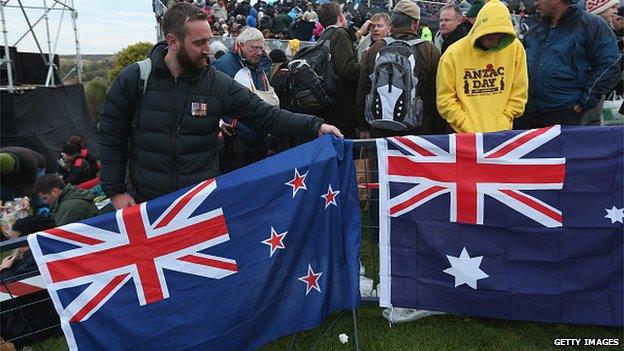
Mr Key has complained that New Zealand's flag (left) looks too much like Australia's (right)
With New Zealand set to hold a two-stage referendum, it is joining a number of countries, including Fiji and Canada, which have sought to shake off their British colonial legacies and reassert their national identities.
Emblems from nature
Members of the New Zealand public have been submitting their ideas to newspapers and online news portal Stuff., external
One popular emblem is the silver fern, which is also favoured by Mr Key. It is used by many athletic teams including the national rugby team, the All Blacks, and is the official symbol, external of the country's tourism and trade industries.
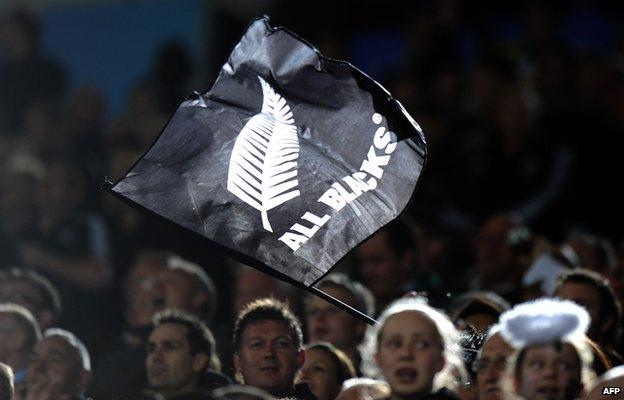
The All Blacks flag is usually flown during rugby matches
But some have expressed concern that its current iteration with a black background is too similar to the Islamic State's flag.
Another popular emblem is the traditional Maori koru, external symbol, which depicts an unfurling silver fern.
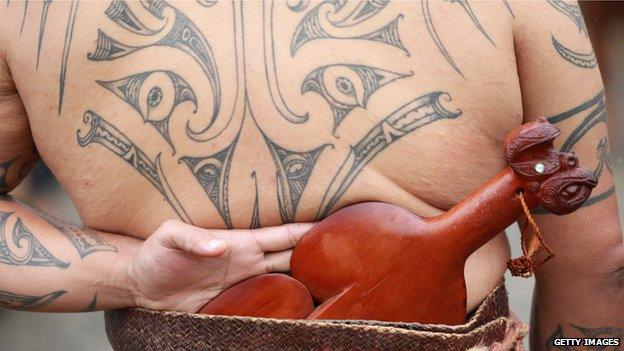
The koru appears in a lot of Maori imagery and traditional tattoos
Some also favour keeping the Southern Cross, a constellation of stars also known as the Crux which is part of the current flag design.
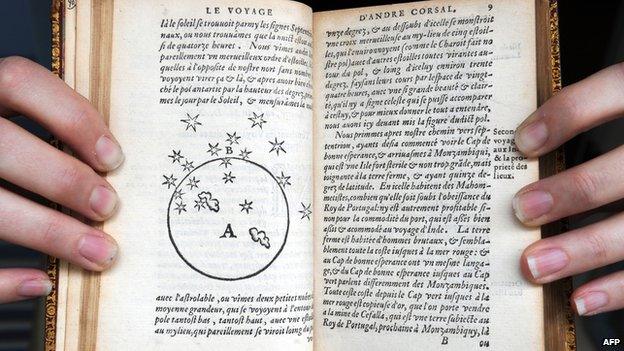
Early explorers had noted down the constellation, which is visible most days of the year in the southern hemisphere
The debate on including natural emblems echo that in Canada, which dropped its Union Jack-based flag in 1964. Besides the maple leaf, some suggested a bear, moose, or the beaver, which is Canada's national animal.
"One of the reasons for choosing natural emblems is that they don't change," Graham Barton, chief vexillologist for the Flag Institute says. He points to flags for certain towns in the US, forever emblazoned with images of what are now vintage wagons from the era of the birth of the railways.
Canada's then prime minister, Lester B Pearson, decided to change the flag after the Suez Canal crisis, in which he played a mediating role and attracted criticism that Canada was biased towards Britain as it had the Union Jack in its flag.
After a two-year process, a highly charged national debate, and intense political manoeuvring, external, Canada's parliament decided on its present red and white maple leaf design.
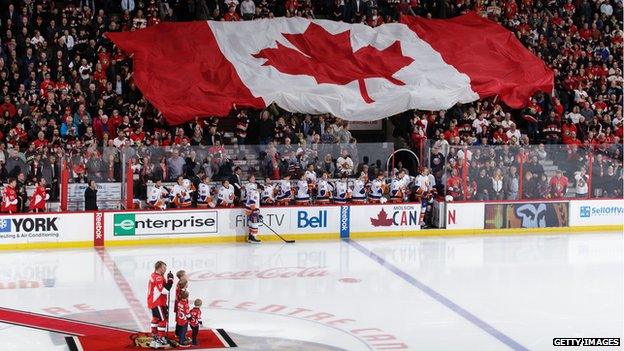
The maple leaf, like ice hockey, is seen as representative of Canadian identity
National diversity
Many in New Zealand are also calling for Maori to be recognised in the national flag.
Some have suggested incorporating the Tino Rangatiratanga flag which represents Maori identity.
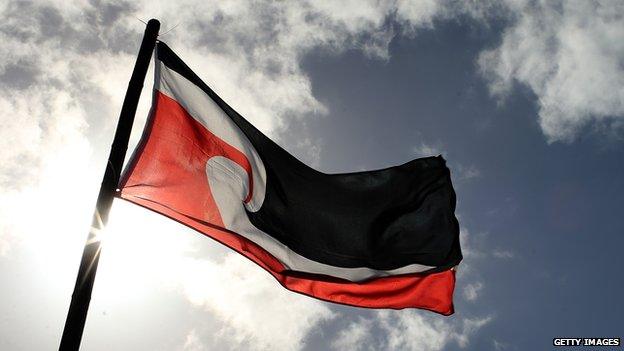
The flag is flown at festivals and major occasions such as New Zealand's national day, Waitangi Day
Others have lobbied for the koru flag, external designed by Austrian artist Friedensreich Hundertwasser, who lived in New Zealand.
But there is also debate on whether such symbols are truly representative of Maori culture, given that the community comprises dozens of tribes, known as iwi.
New Zealand's government said it will conduct hui, which are traditional Maori community gatherings.
Other countries which have debated diversity representation in their flags include Canada - which saw Anglophiles arguing to retain the Union Jack and Francophones lobbying for the French fleur-de-lis - and South Africa.
But trying to represent diversity in flags is a complicated business.
"Canada didn't try to represent French, British and the First nations. In the end, they went for a flag that represented the geography of the country. The two red bars represent the Atlantic and Pacific oceans," Mr Bartram says.
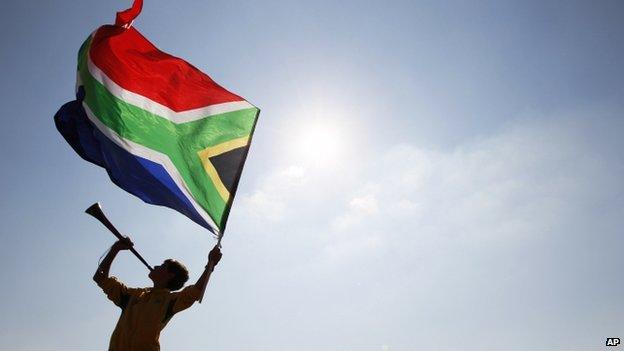
South Africa's six-colour flag has elements from the flags of different political groups
South Africa's flag was initially an interim one put in place at the last minute for the country's first democratic elections in 1994, following months of indecision. But the public grew to like it so much that it has remained.
"It is very difficult to bring something together when it comes out of turmoil. That's why South Africa is one of my favourites. It achieved what it set out to do," Mr Bartram says.
Its creator, Fred Brownell, told the BBC last year that its design represents "convergence and unification". It incorporates elements from various political groups, and even references coral trees and traditional Zulu hats.
Permanent change?
New Zealanders will have two votes: one at the end of this year to choose the best new design, and another in March 2016 to decide whether to retain its present flag or adopt the new design.
But after changing their flags, some countries have opted to go back - as Malawi demonstrated in 2012.
In 2010, President Bingu wa Mutharika changed its rising sun flag to show a full sun and said it reflected Malawi's move from a developing to a developed nation.
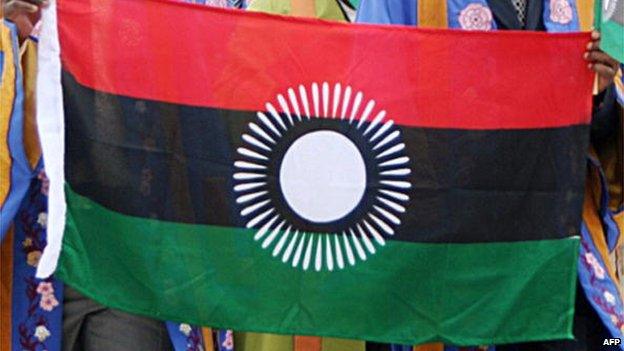
Malawi had a full sun depicted on its flag from 2010 to 2012
But the change was highly unpopular and, following his death two years later, Joyce Banda, who took over his position, reversed the decision.
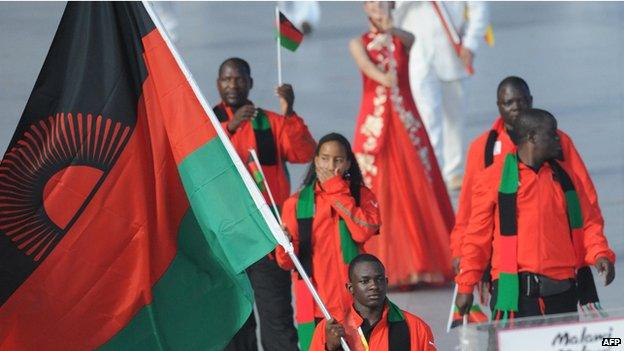
Ms Banda reinstated Malawi's rising sun flag which has been flown at international events
Justice Minister Ralph Kasambara told the BBC in 2012: "A flag has got a very fundamental significance... The flag is part of our association with the independence struggle, the history of the country."
- Published11 March 2014
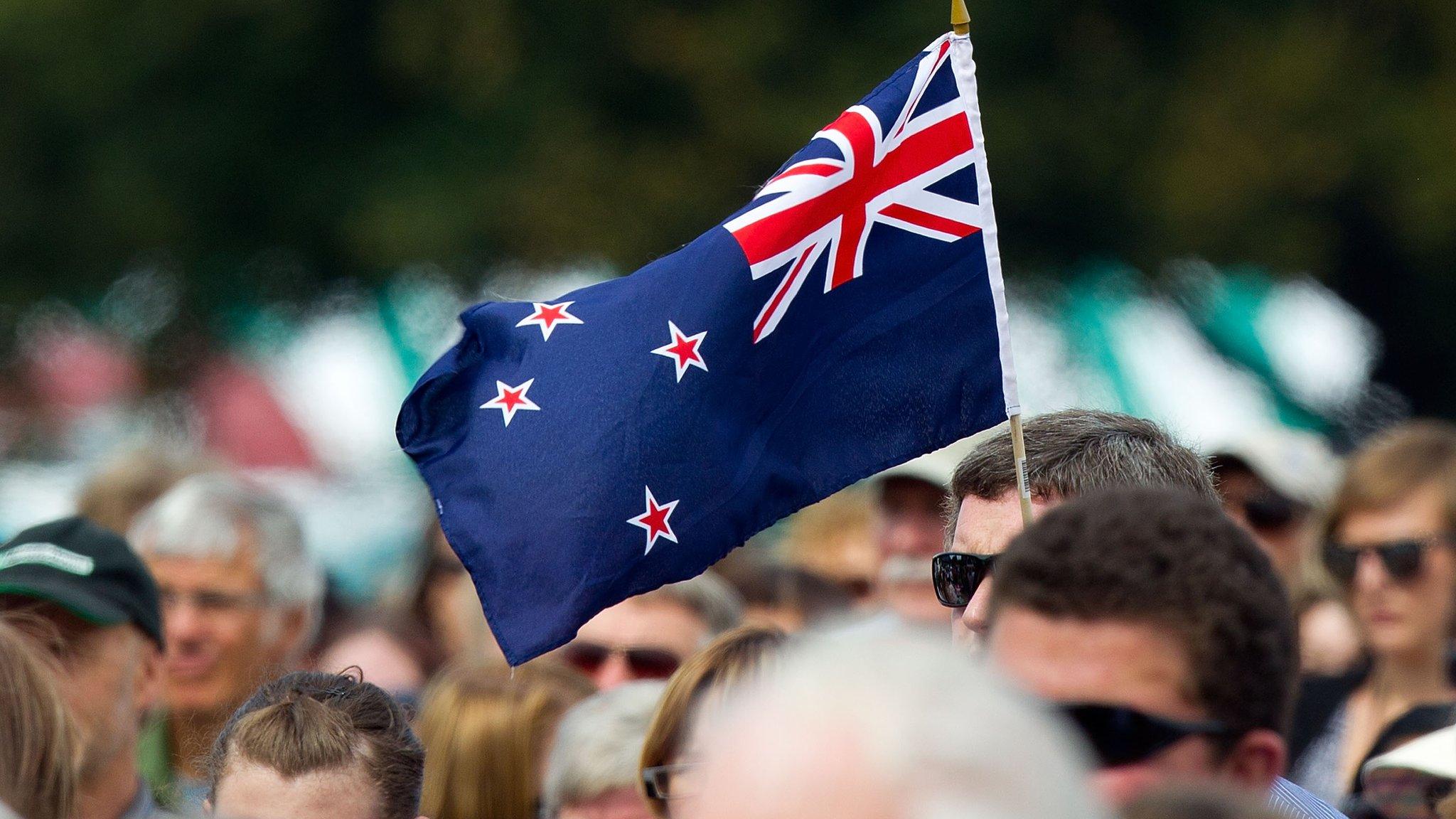
- Published27 April 2014
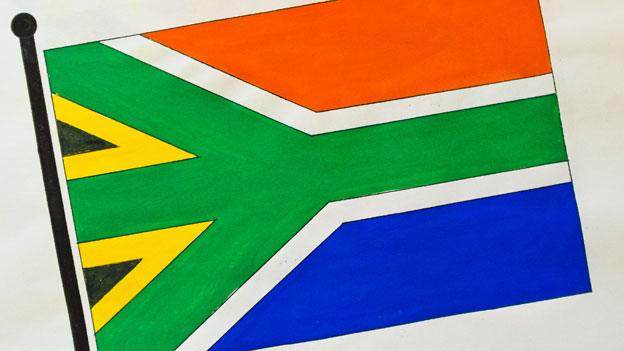
- Published29 May 2012
